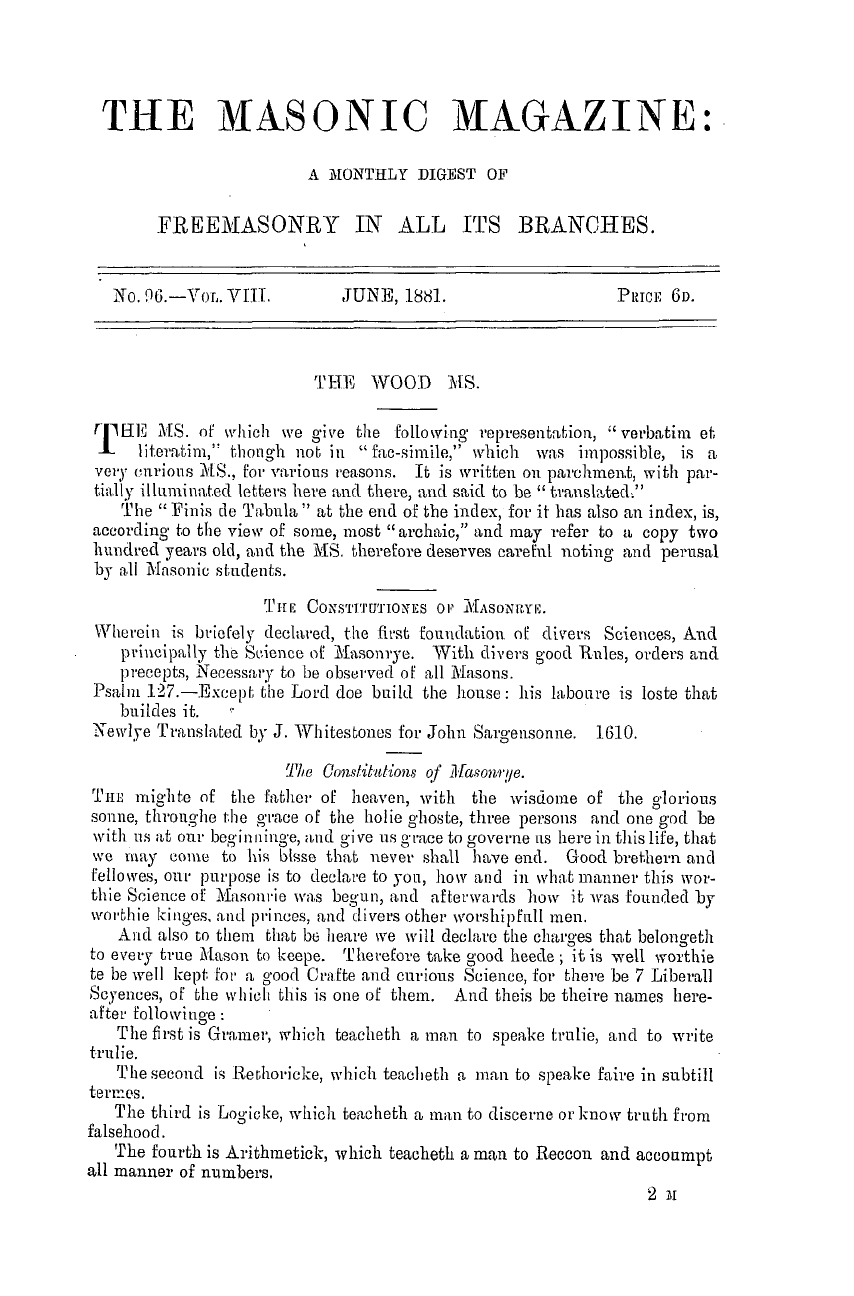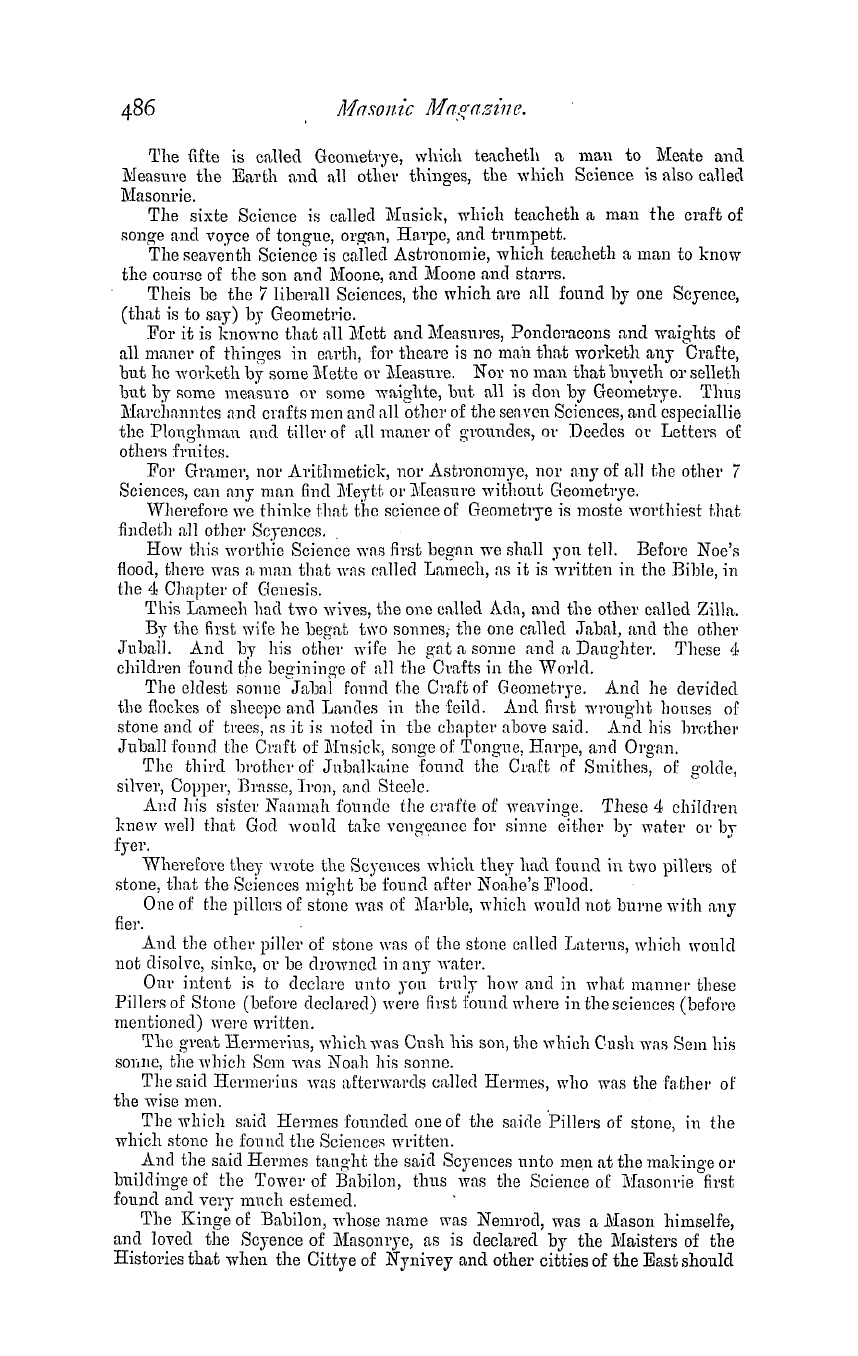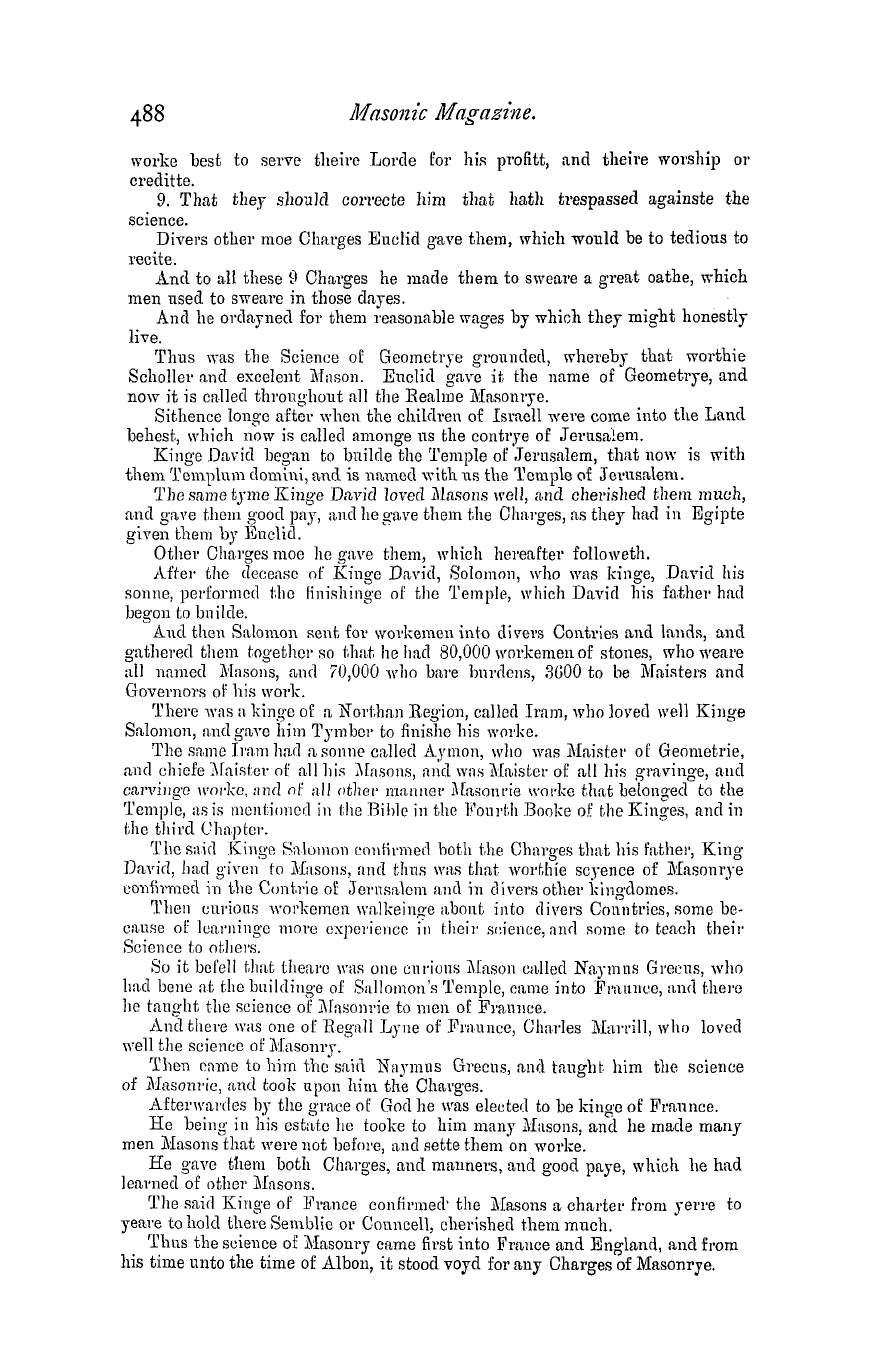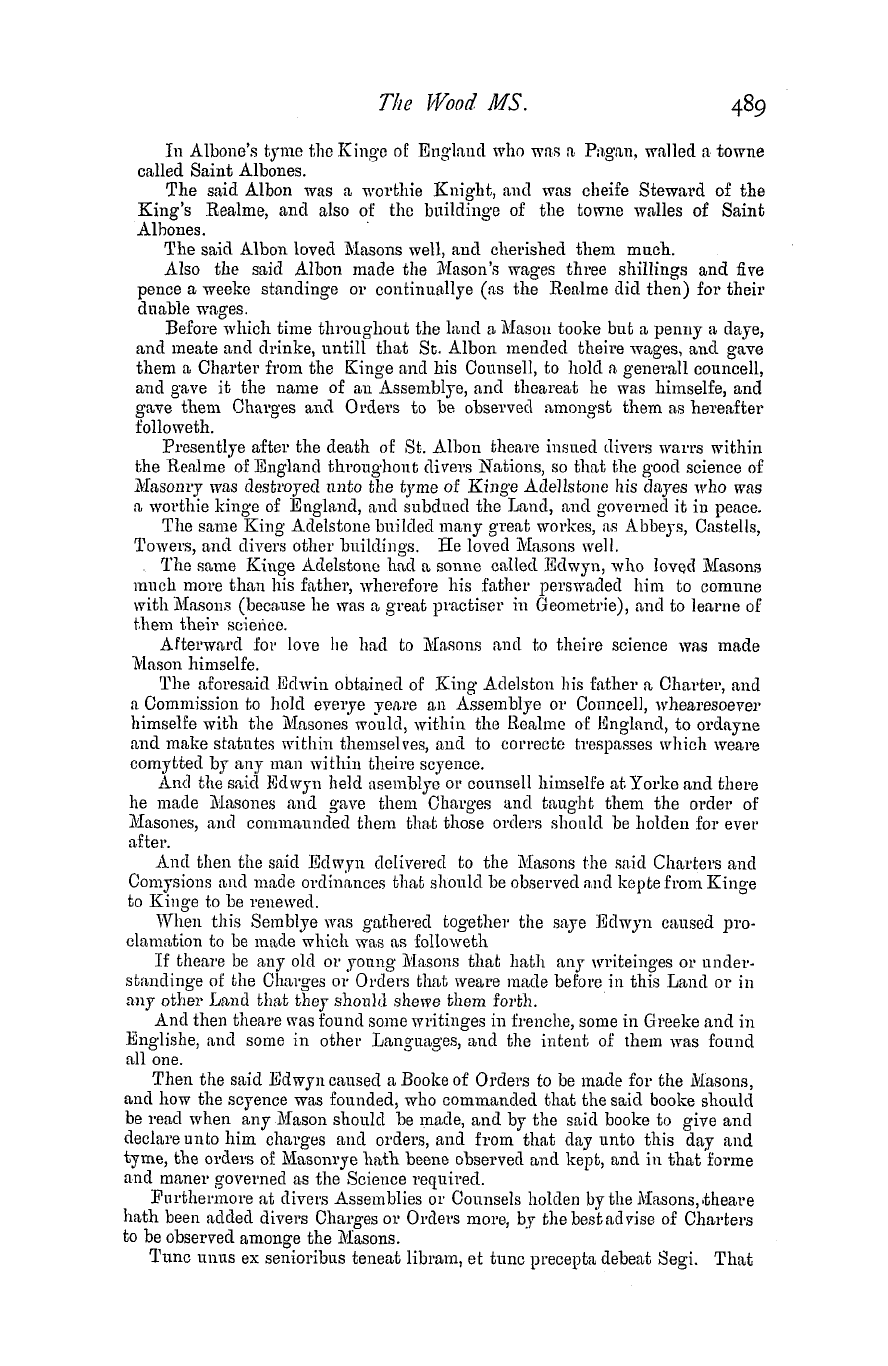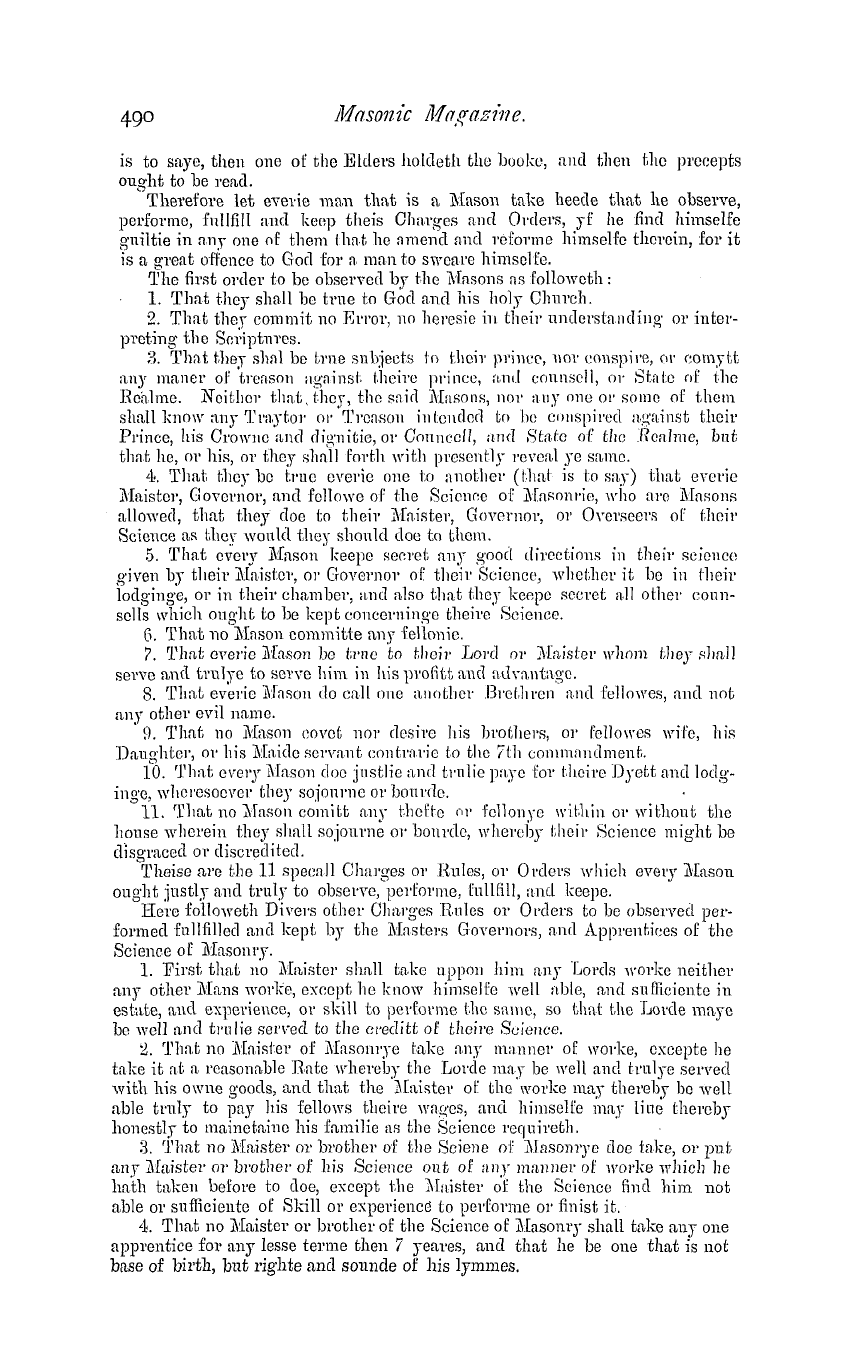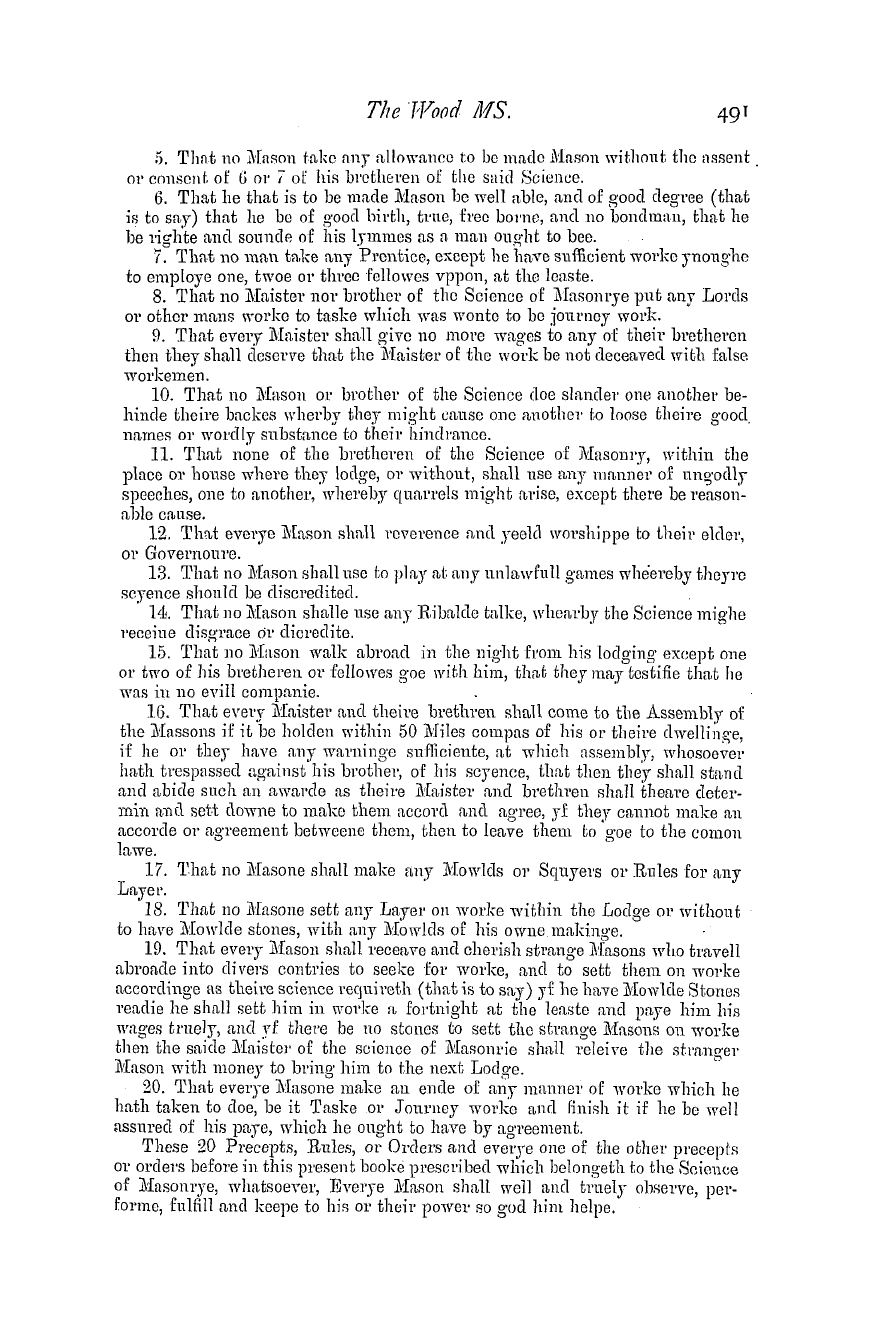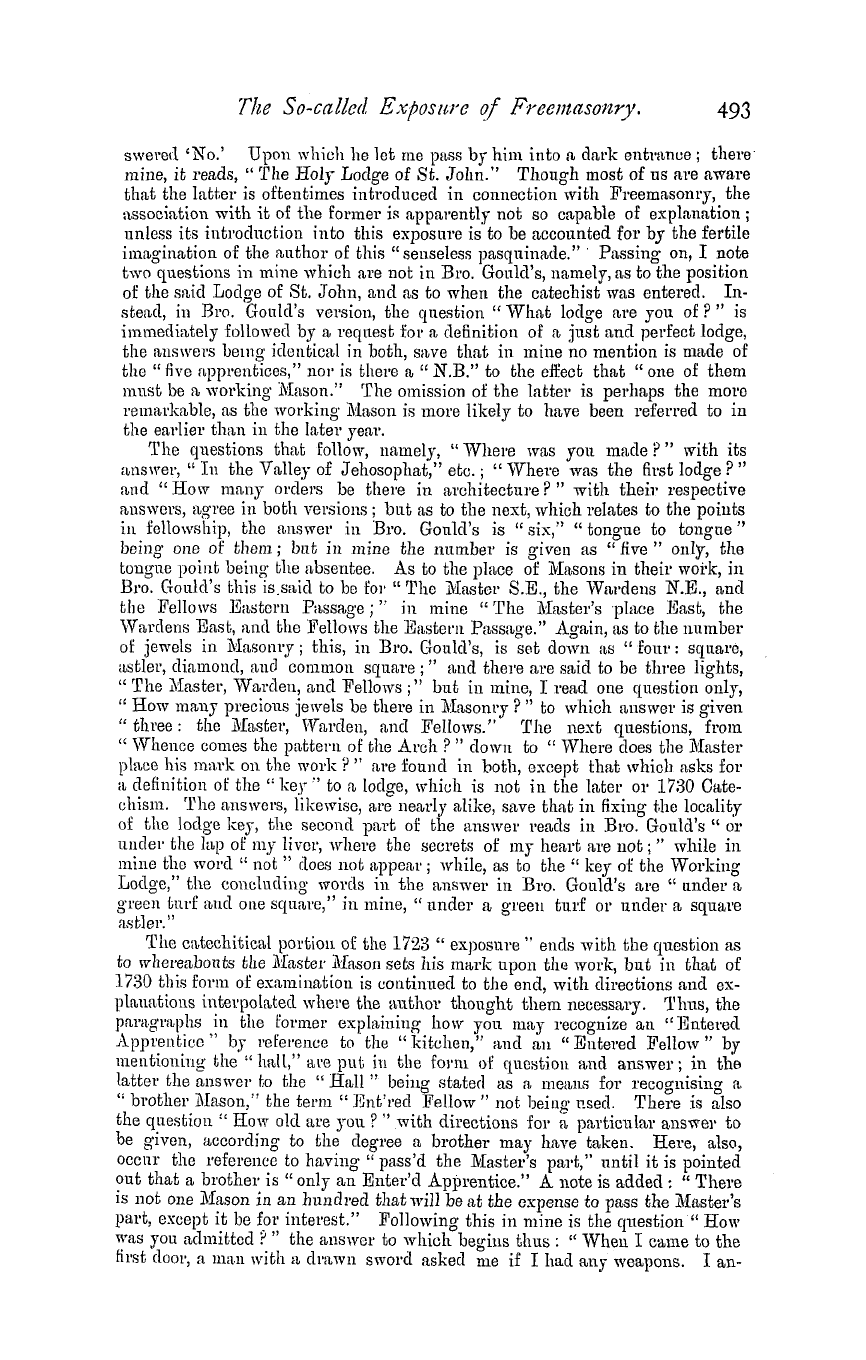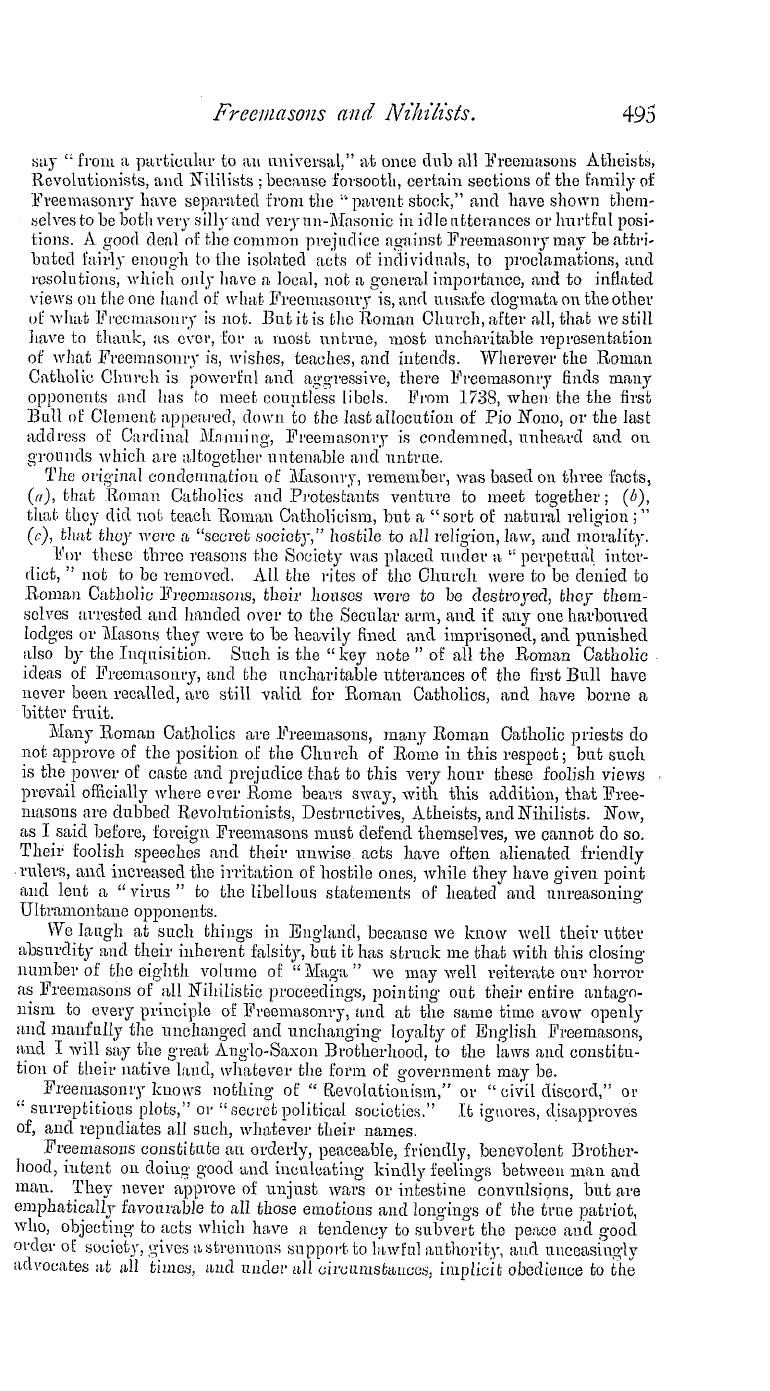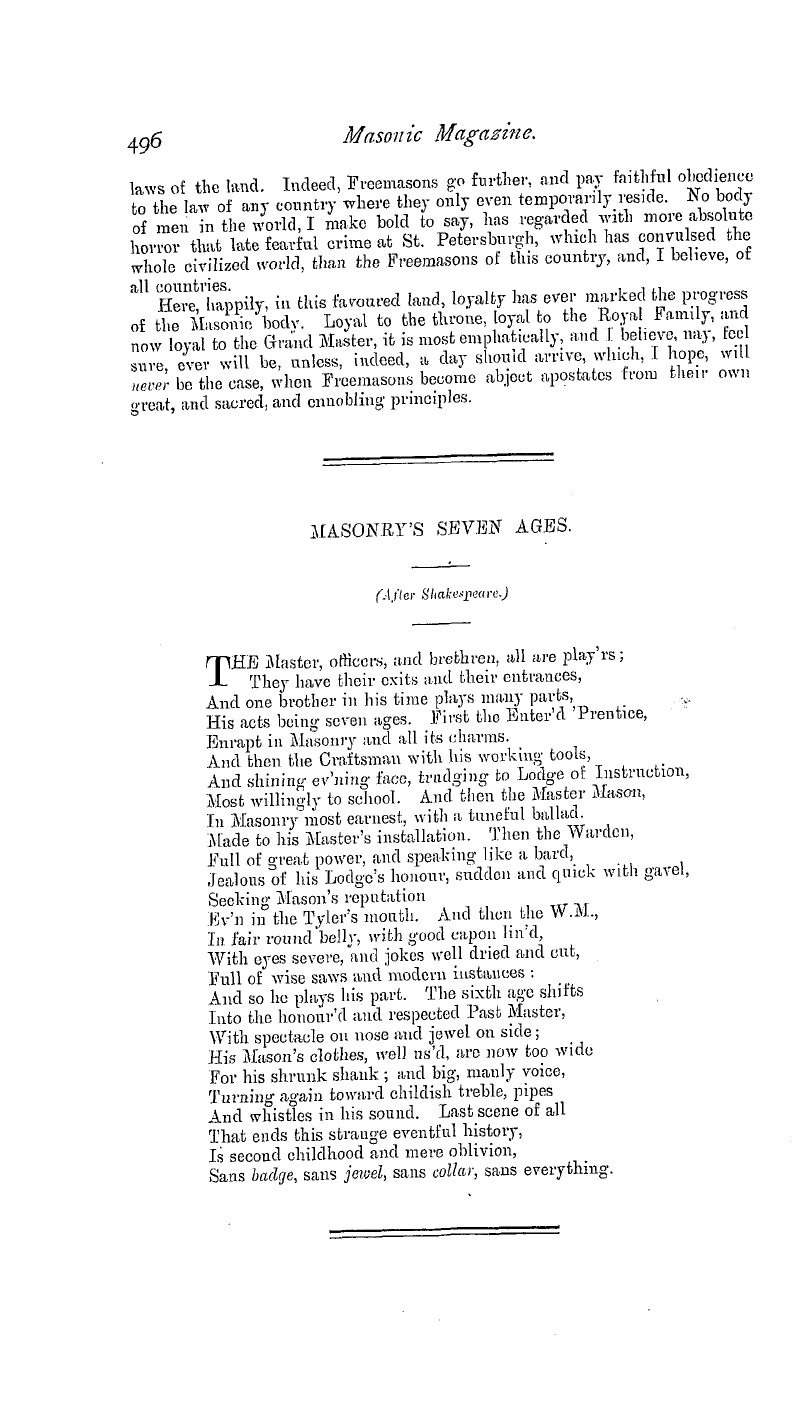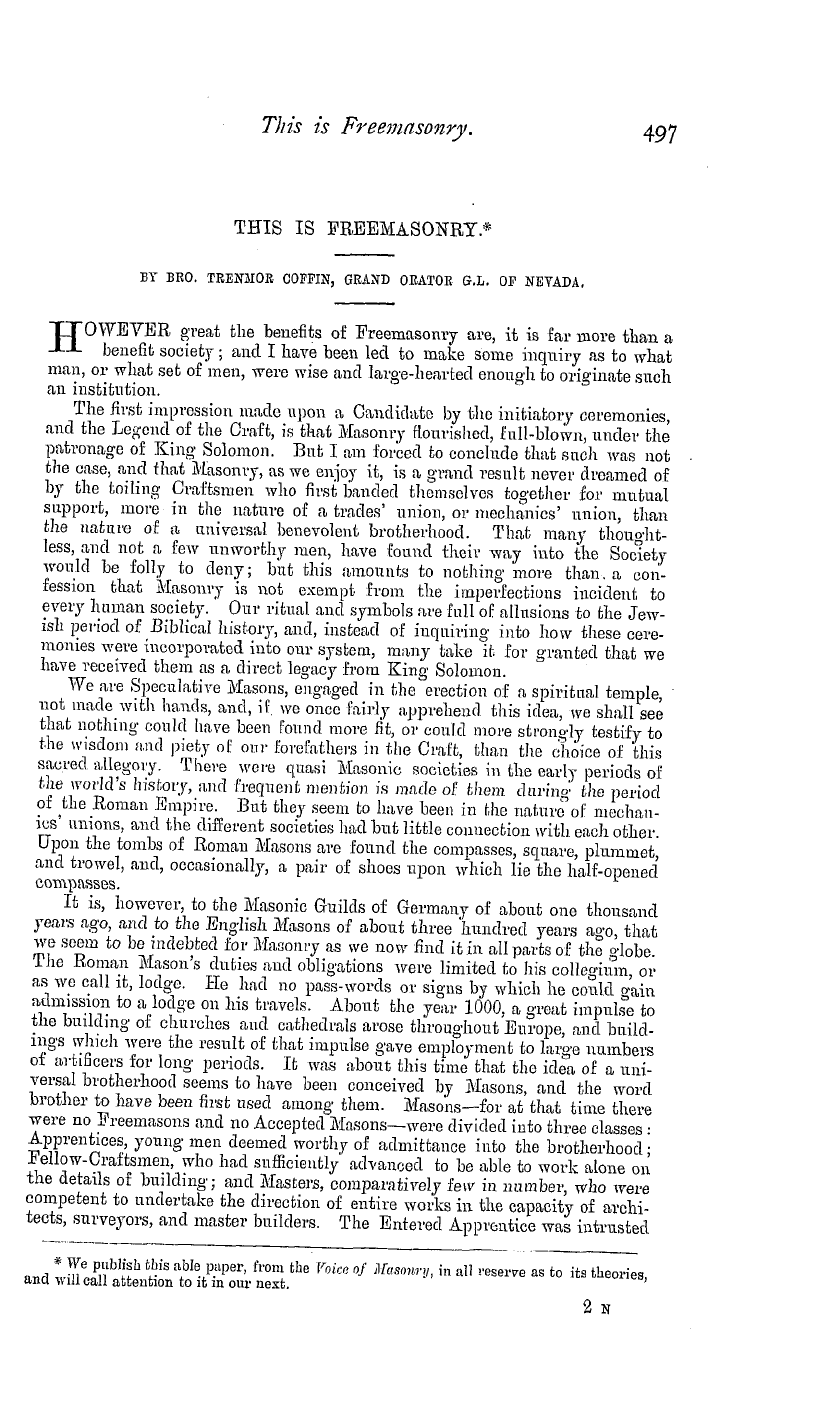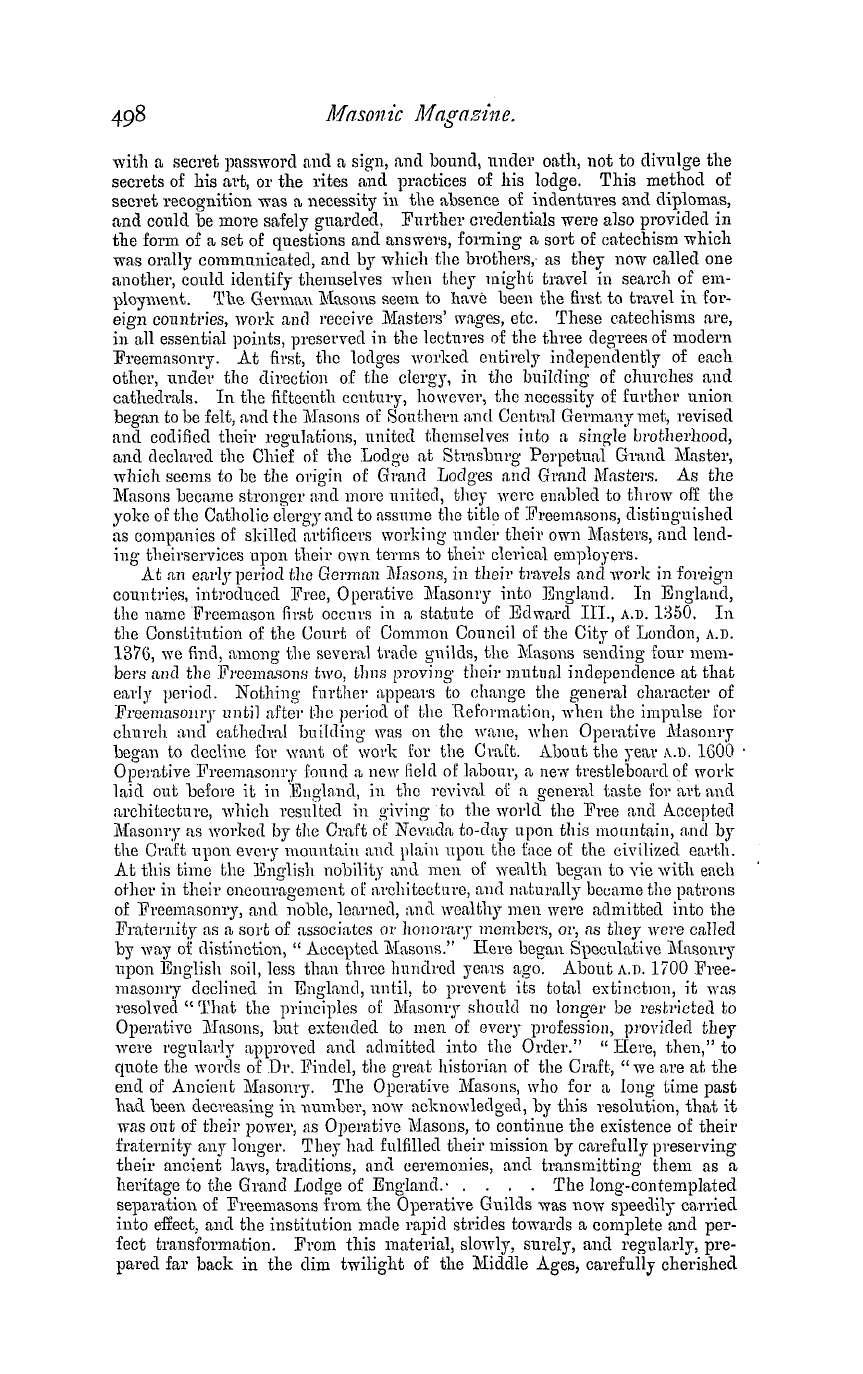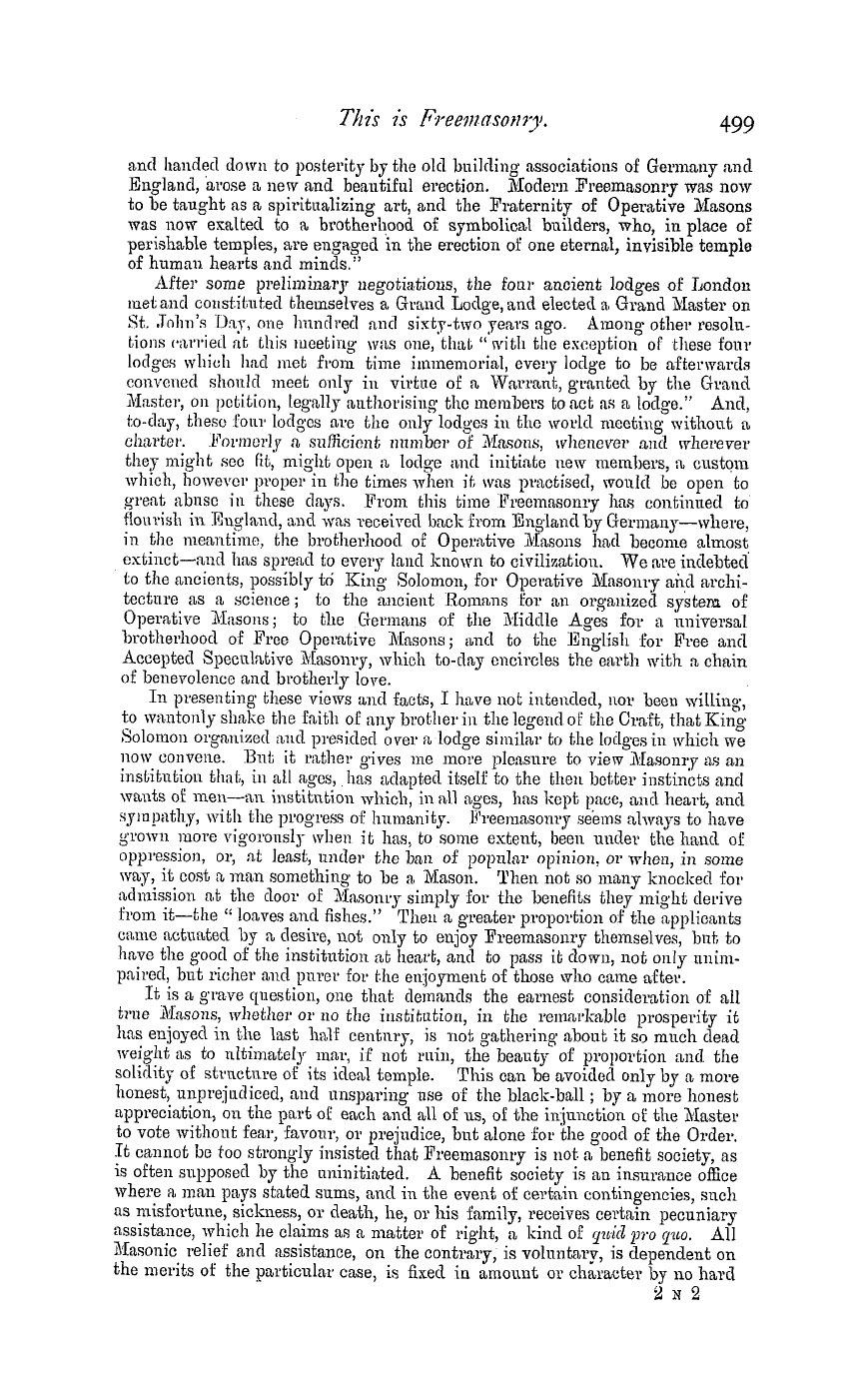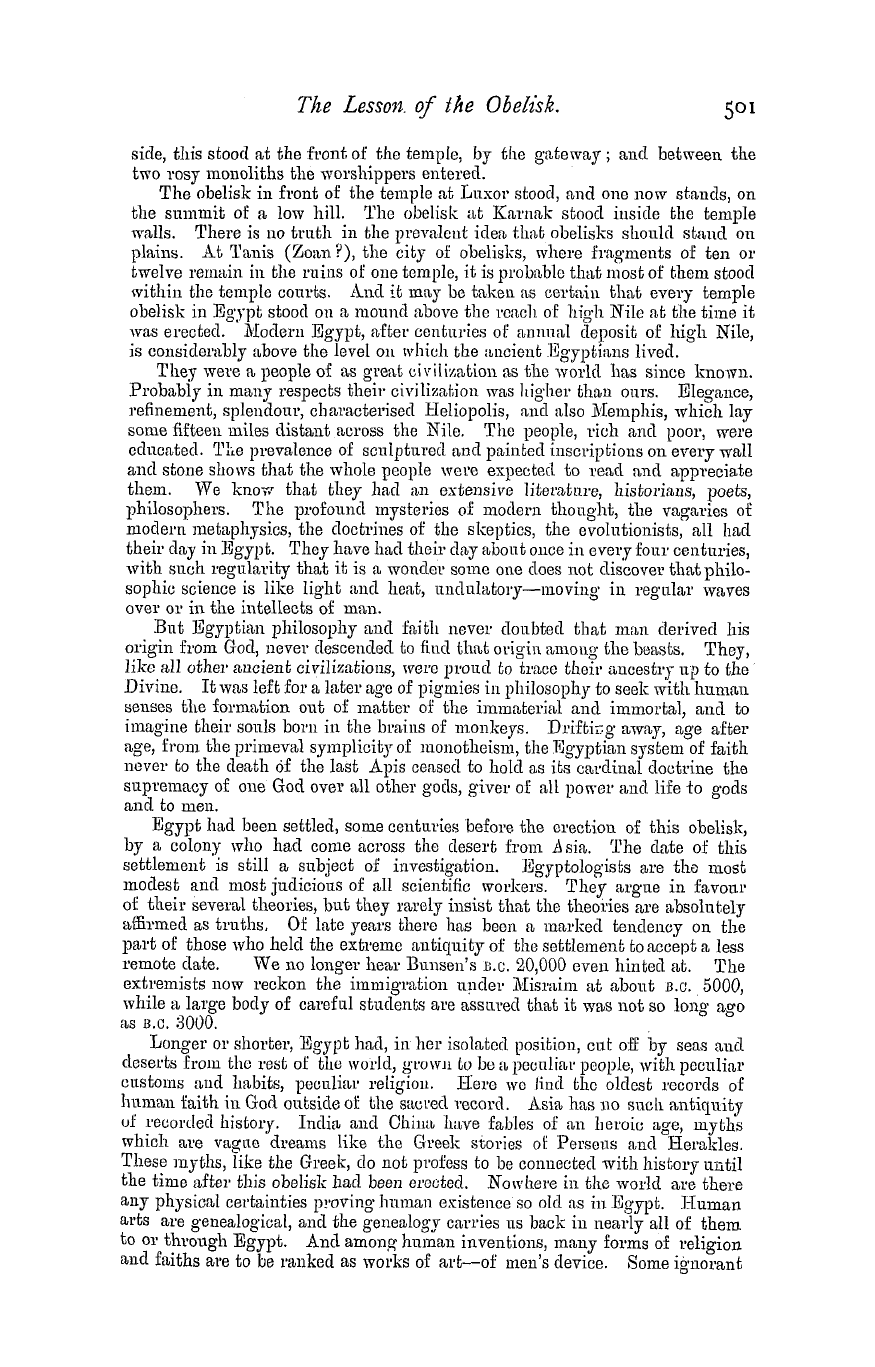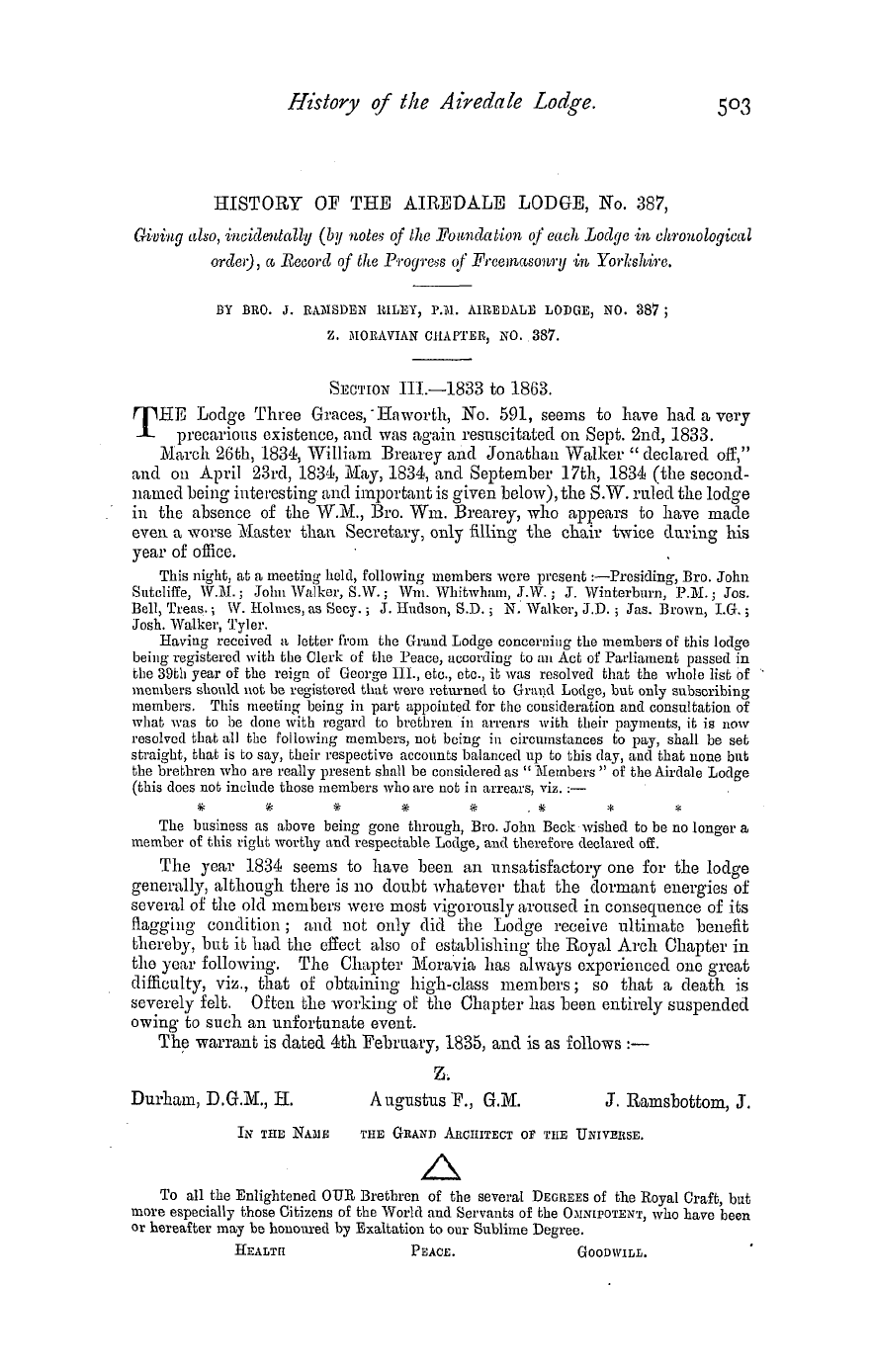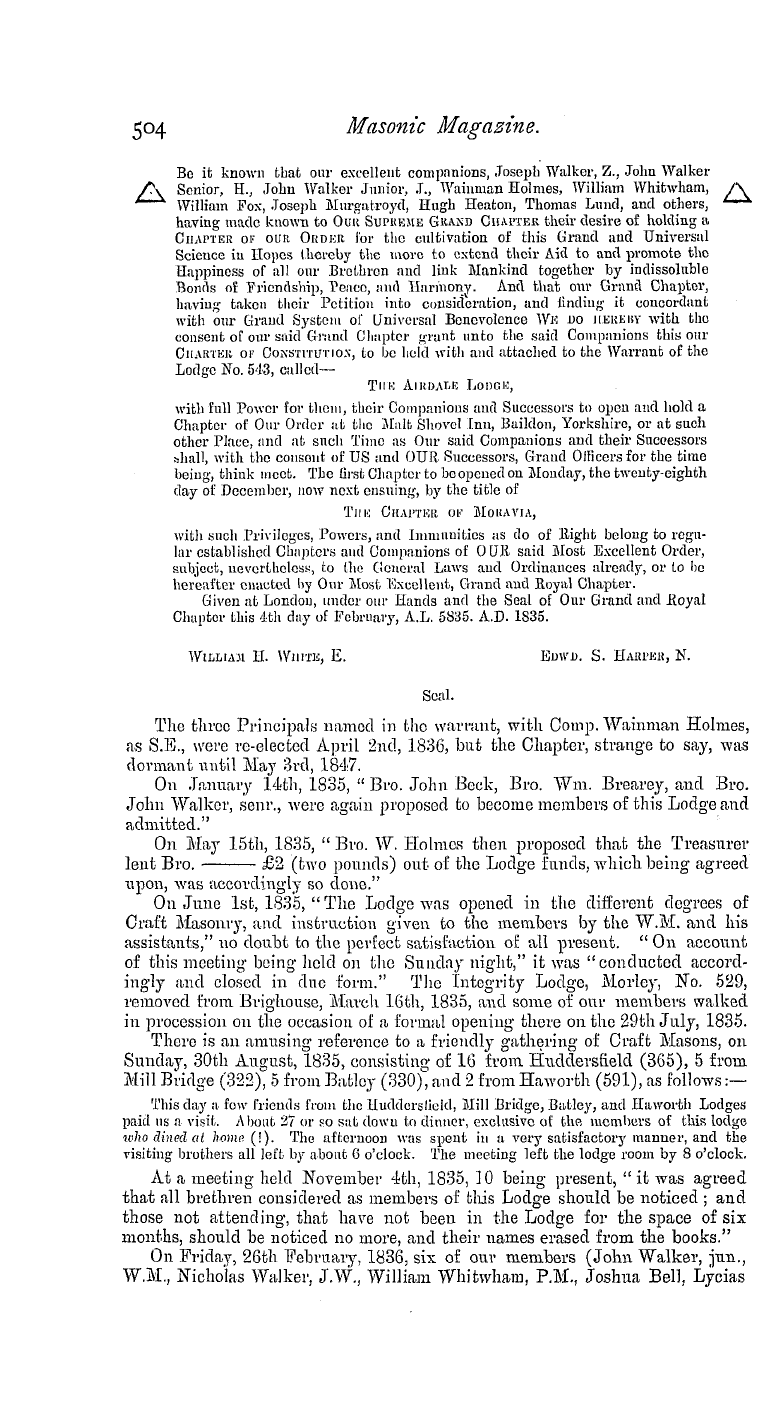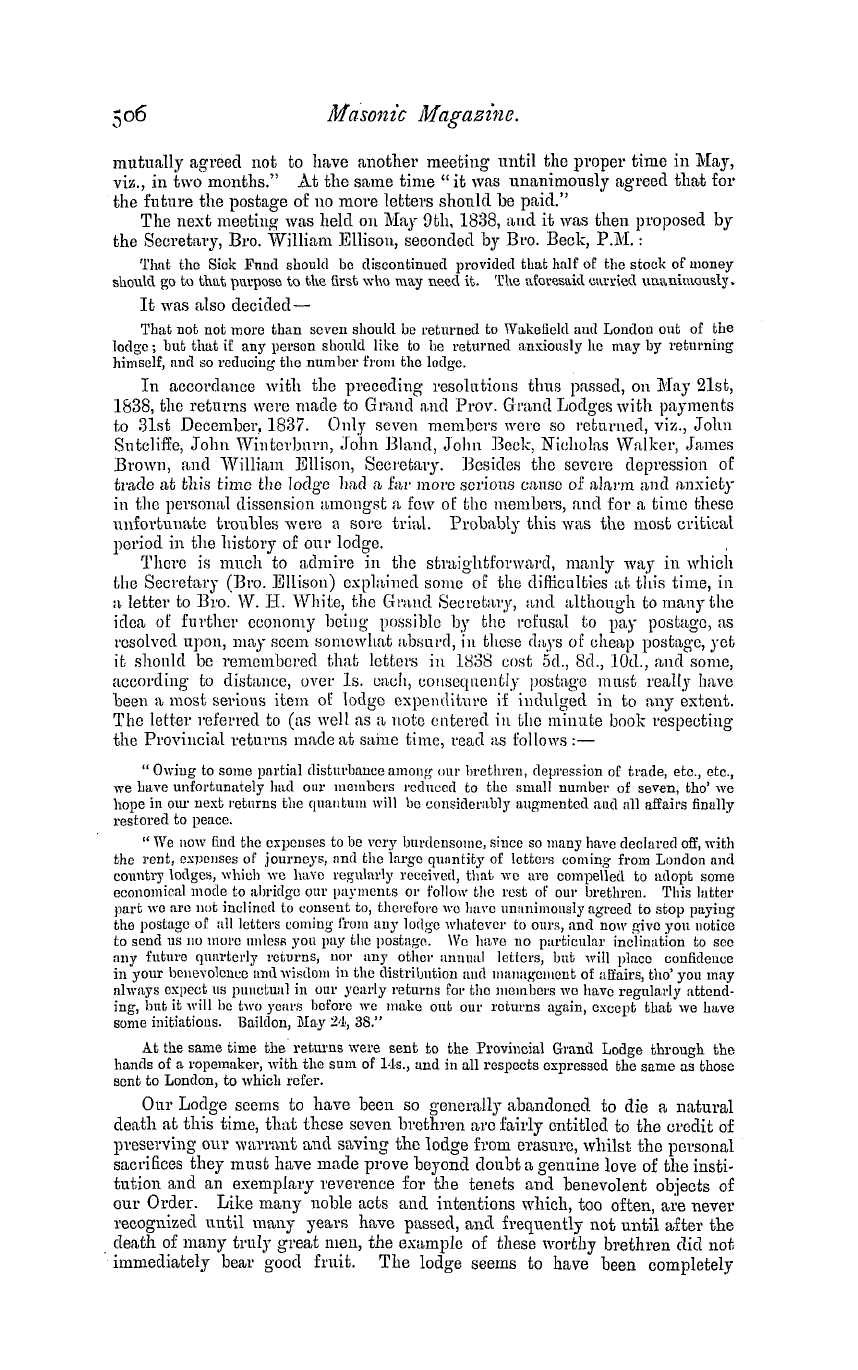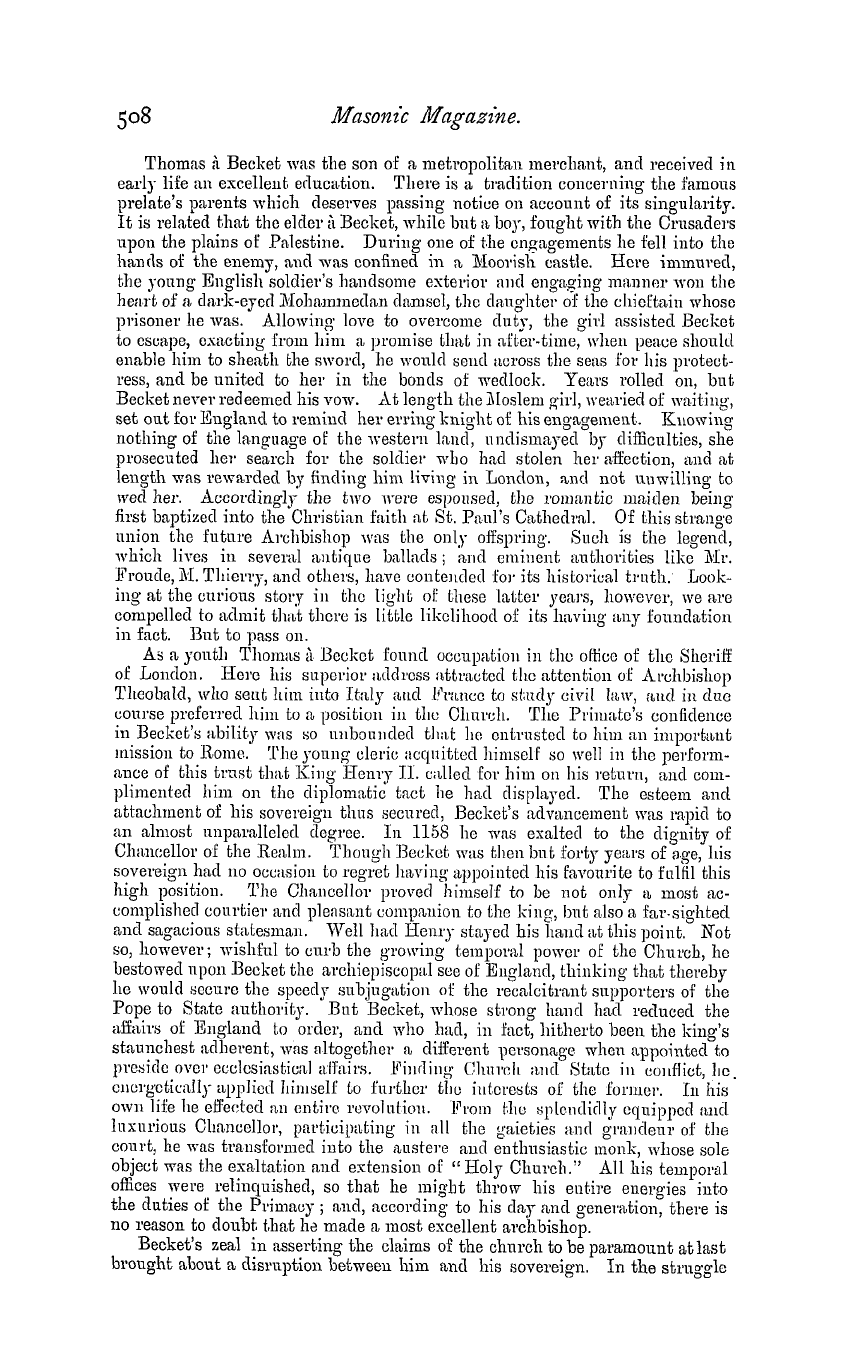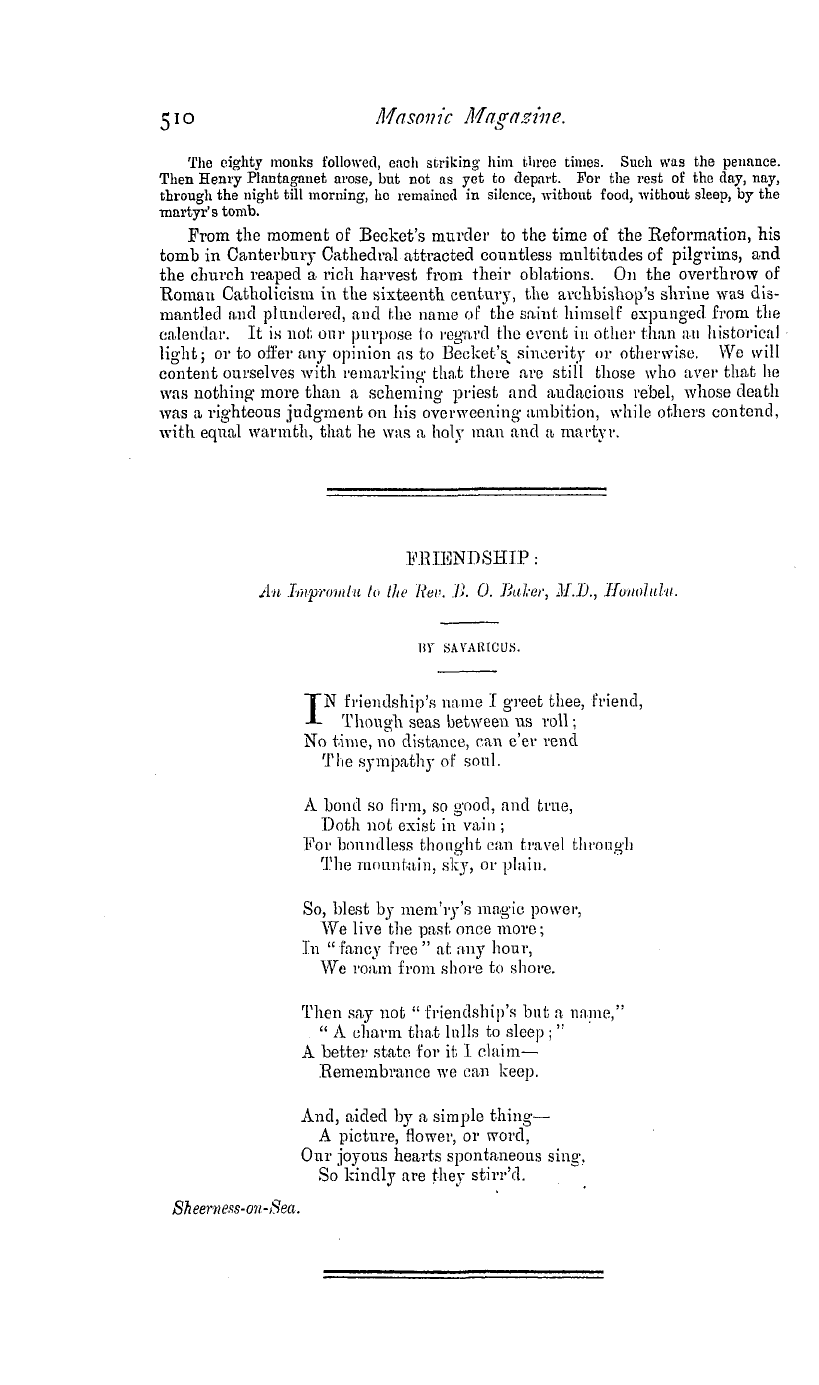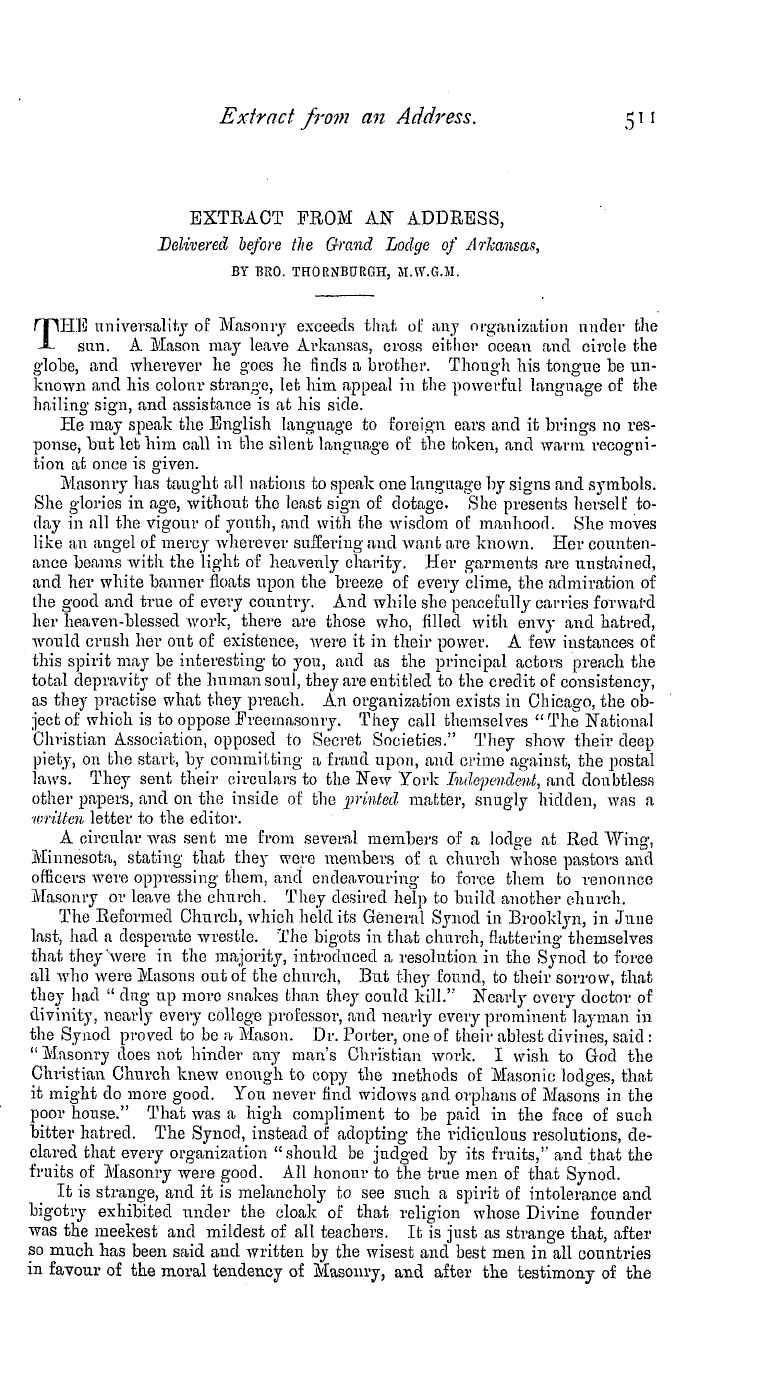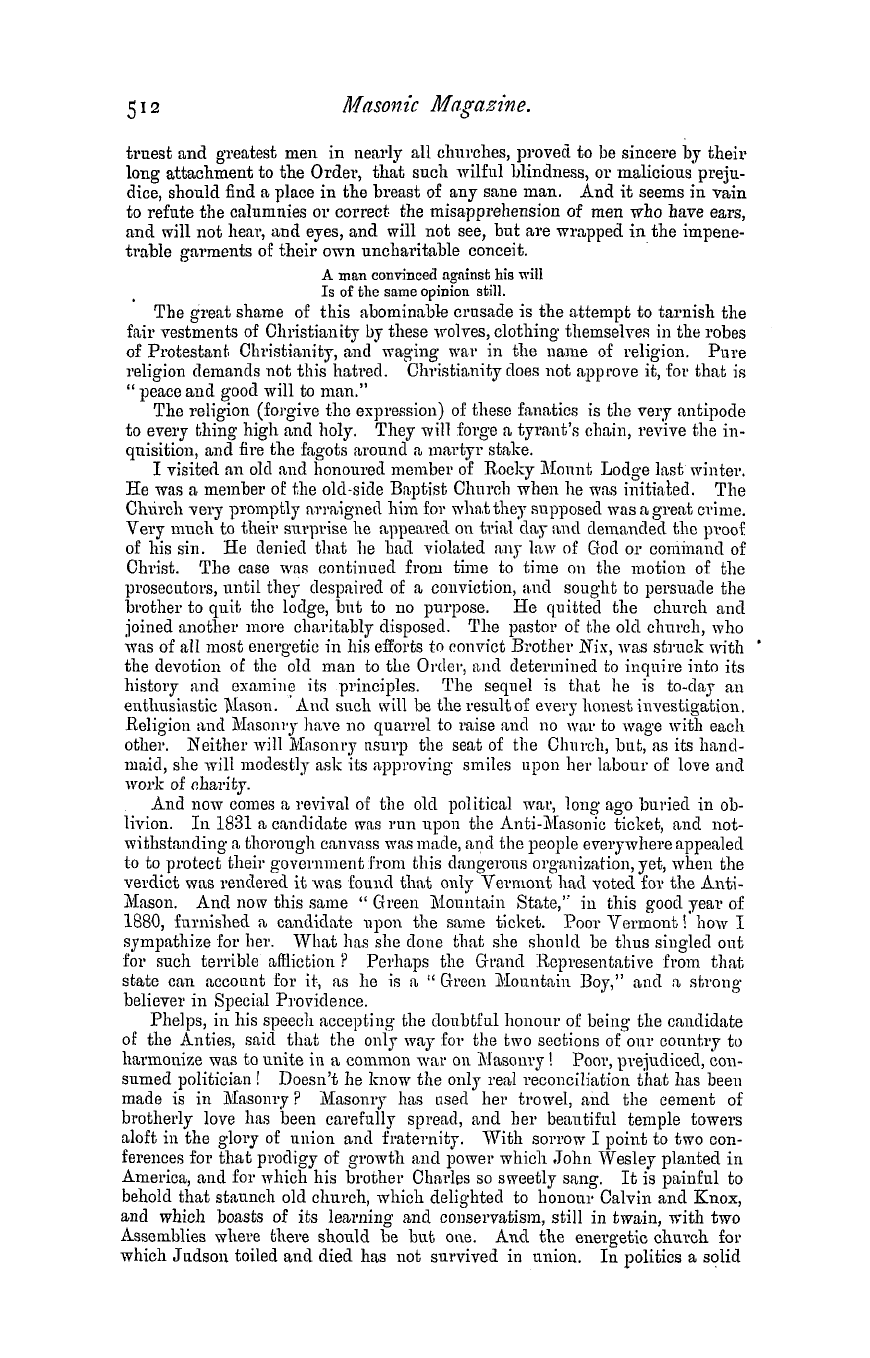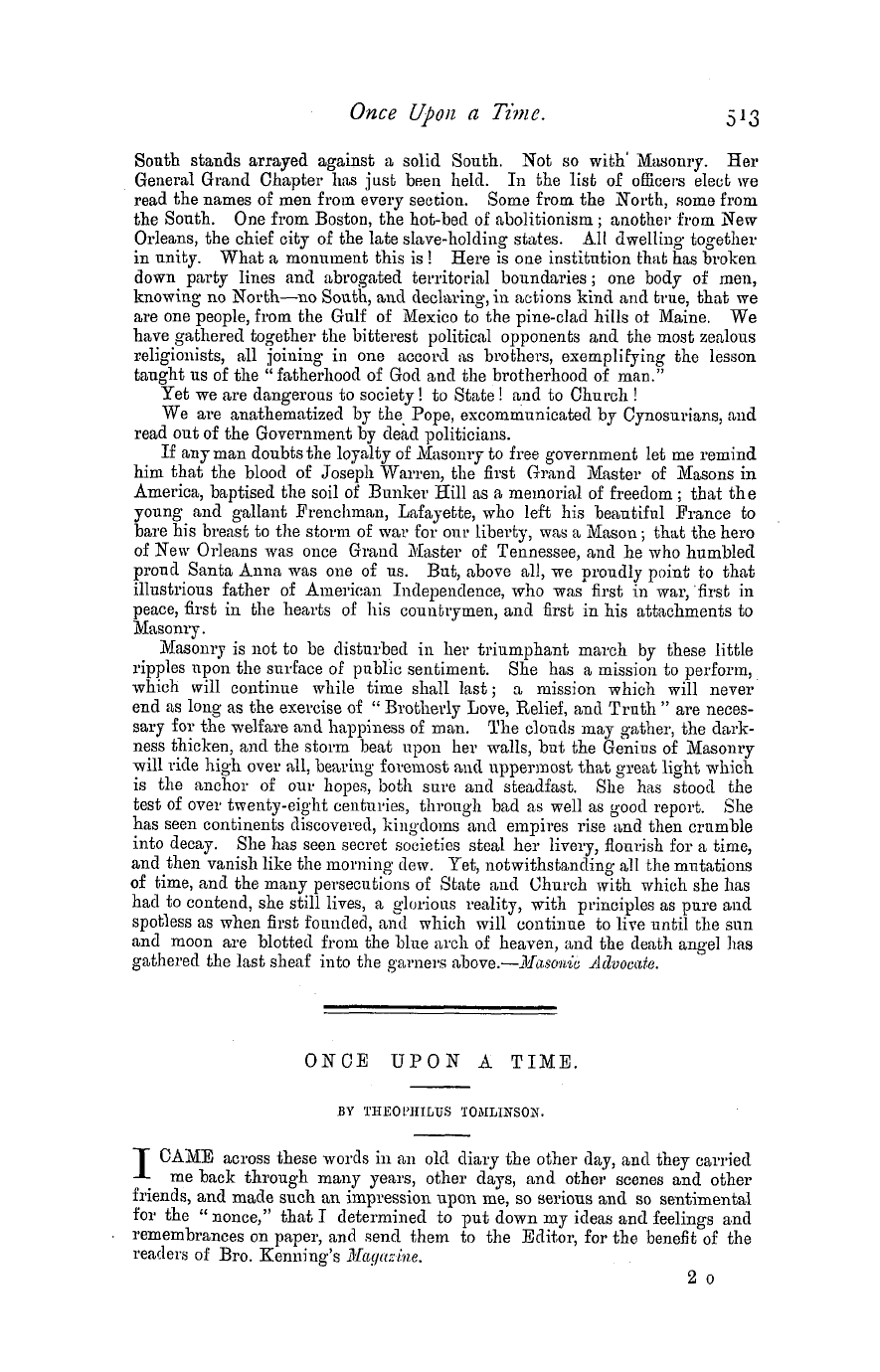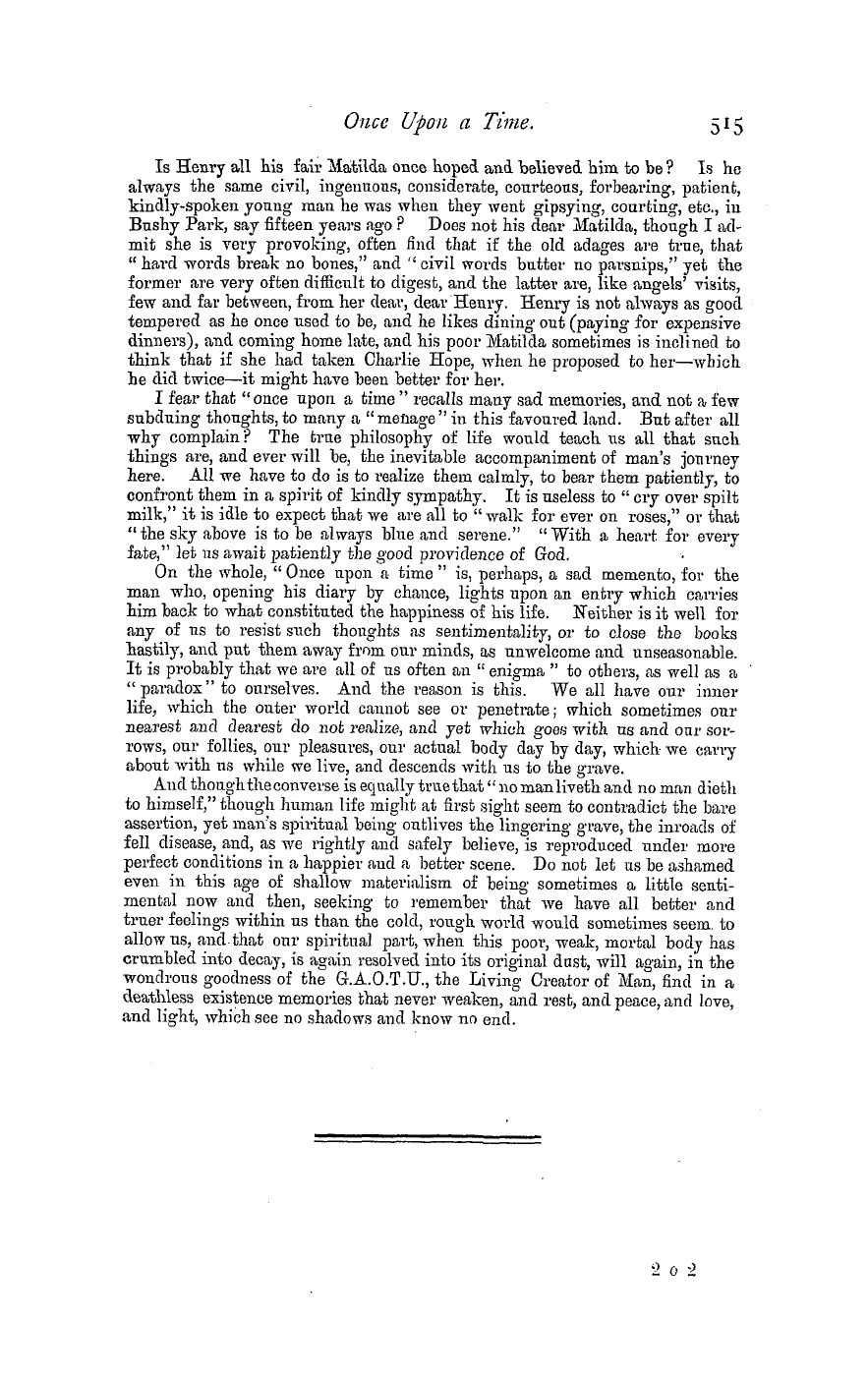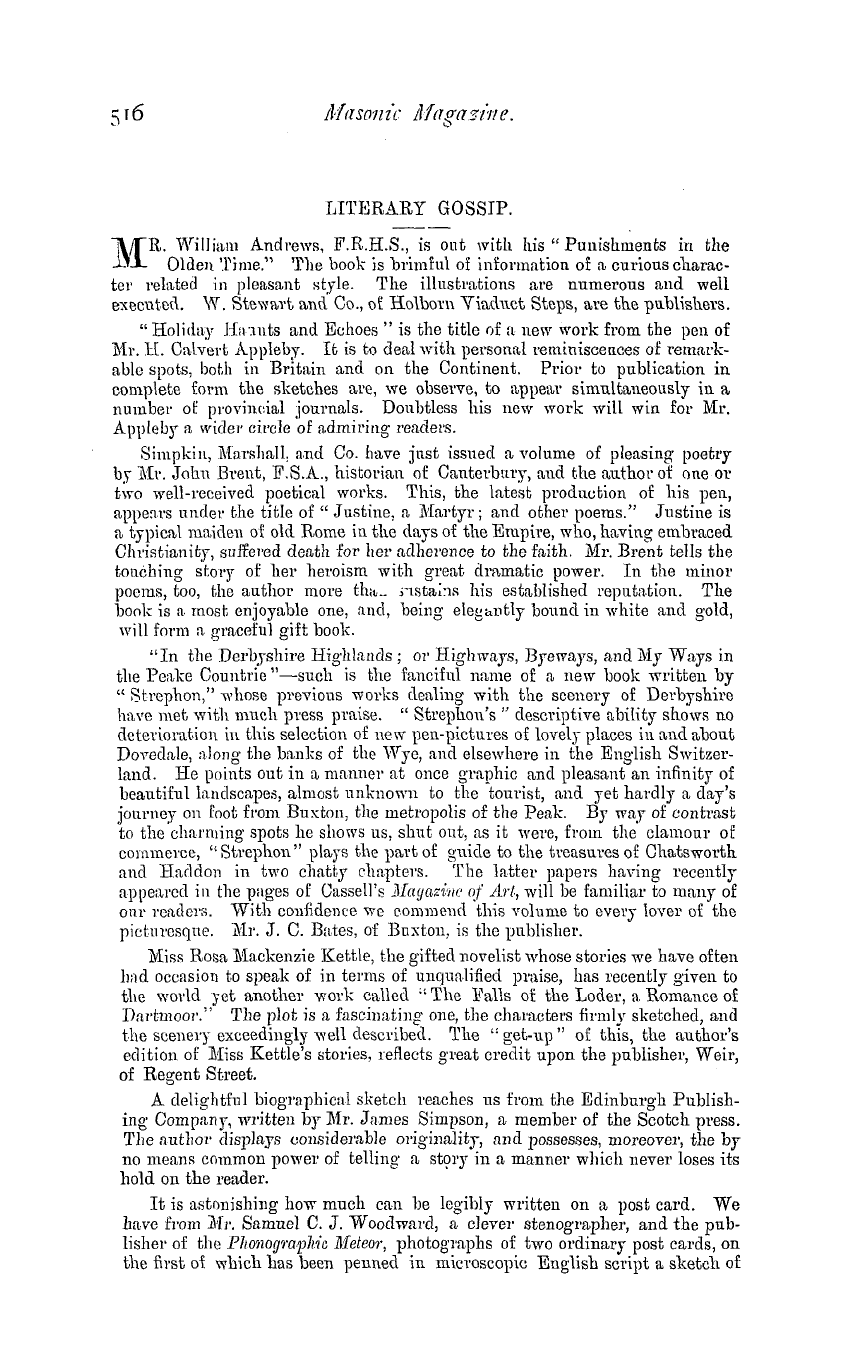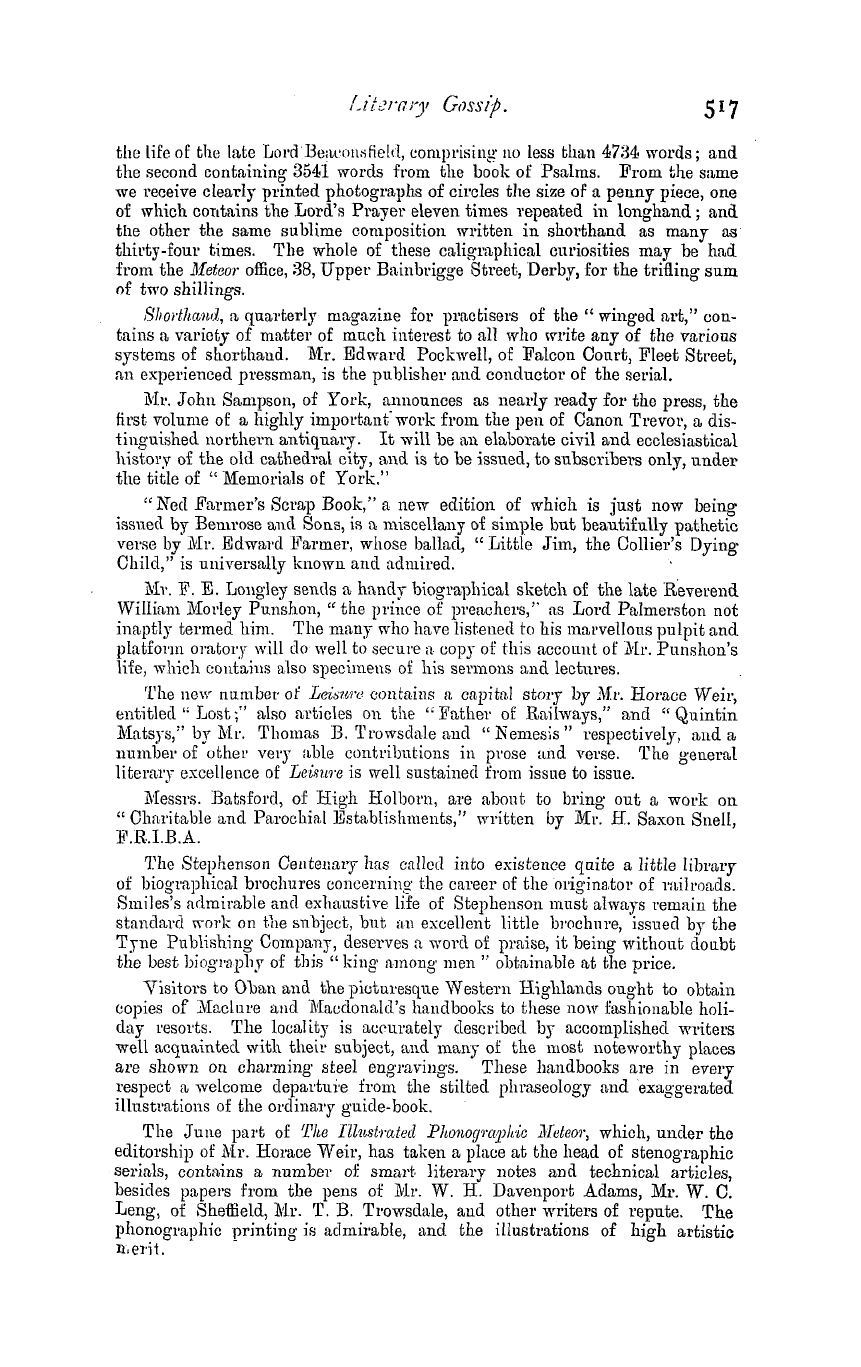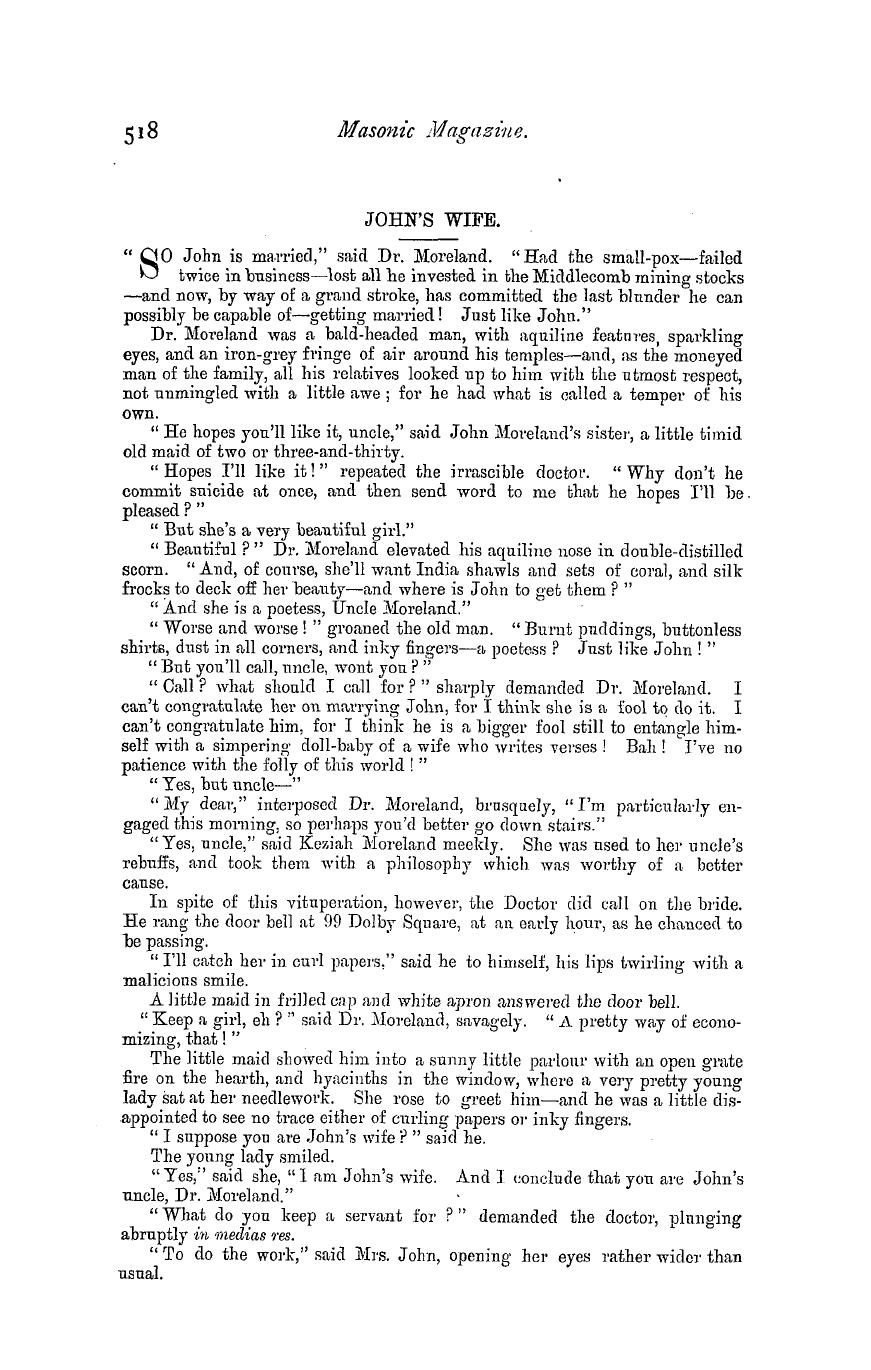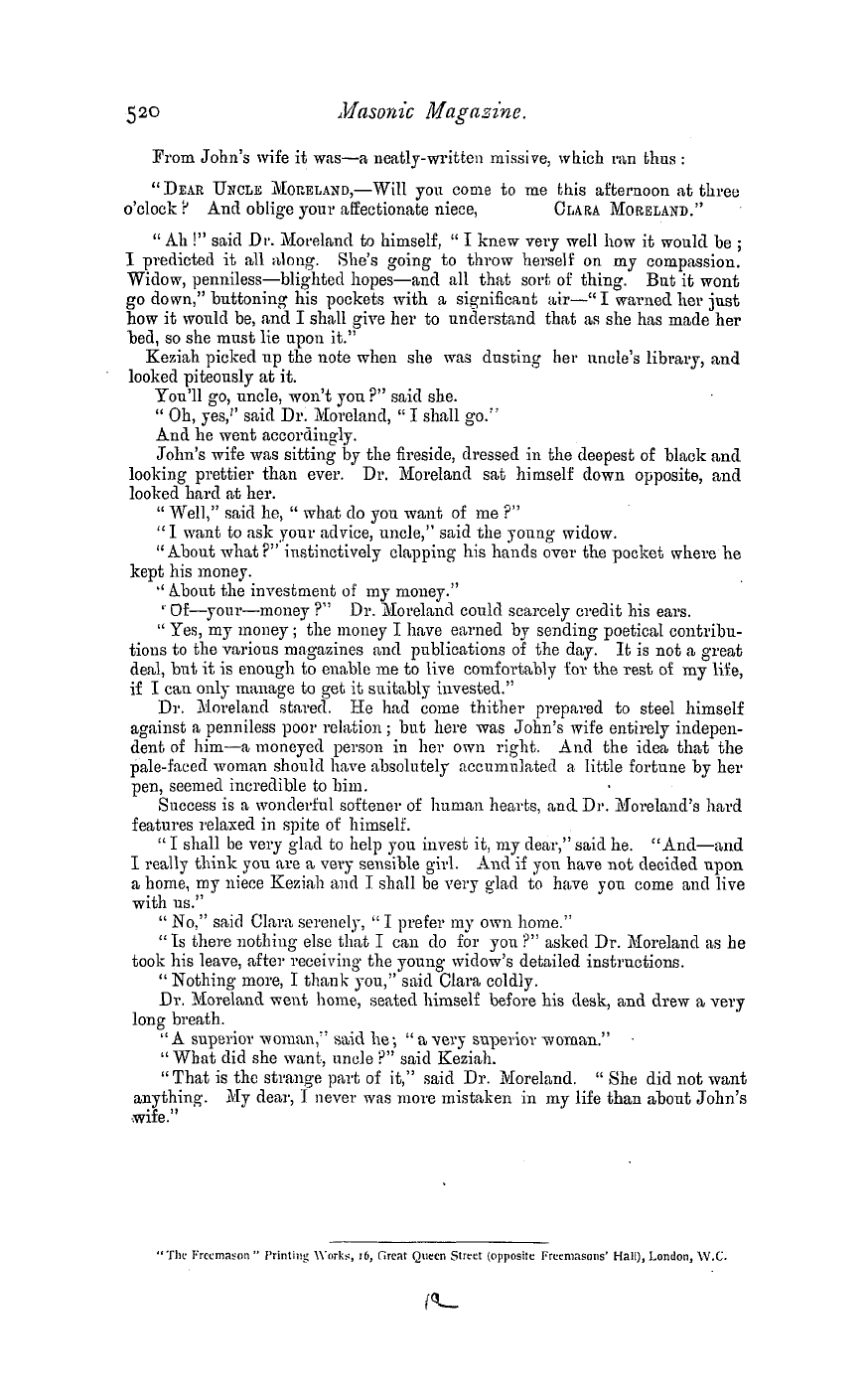-
Articles/Ads
Article THIS IS FREEMASONRY* ← Page 4 of 4 Article THE LESSON OF THE OBELISK. Page 1 of 3 →
Note: This text has been automatically extracted via Optical Character Recognition (OCR) software.
This Is Freemasonry*
or fast lines , is g iven silently and unostentatiously ; is , in fact , charity in the purest import of the word . Says an an eminent Masonic writer : "It is impossible to estimate the true Masonic benefits . Patronage , customs , and acts of kindness ancl friendship have no ascertainable value , but moral support is no less real than pecuniary help , because it cannot be expressed in the form of a balance sheetand secrecy is the very essence of Masonic charityas it is of
, , everything belonging to tho Craft . Such , then , is Freemasonry . This Union of Unions , which joins all good men into one family , in which the principle of equality , together with that of brotherly love—that is , love for the human race—is the predominant one , ancl the end and aim of all its moral influence upon others . This is Freemasonry .
The Lesson Of The Obelisk.
THE LESSON OF THE OBELISK .
AN INTERESTING CHAPTER ON EGYPT . MR . W . C . PRIME writes to the New York Journal of Commerce of the obelisk as follows : I take no stock in the doctrine of some writers that objects like the obelisk are better left in their own countries . The interests of scholarship are better
served by removing them . The unity of the human race is better taught by thus making the people of various lands and ages familiar h y sight with the work of other men and other times . No possible object could be served by keeping this monolith in the place where a Roman put it long after it was first erected at Heliopolis . It has been a restless stone . Quarried at Syene , floated to Heliopolis , again
floated to Alexandria , and now again across the ocean to America , it will perhaps yet make the circuit of the world and return to Heliopolis before the old faith of the Egyptian becomes reality and he returns in the flesh to see his great works ivhich he built for eternity . I see that , it is IIOAV making its slow progress through the streets of the city toAvard the park . It was cut out of that quarry at Es-Souanthe ancient
, Syene , at the first cataract of the Nile , some 3 , 400 years ago . If it was erected at Heliopolis by Thothmes III , that must have been toward n . c . 1500 . The date is not certain . No E gyptologist protends to fix it . Egyptian chronology is very much in the dark at earlier dates than B . C . 800 . Taking its commonl y received history as true , it ivas moved by the quarrymen just about as far overland from tho quarry to the Nile as it is now moving
from the water to Central Psrk . If probably moved quite as fast , perhaps faster . From the monumental pictures of transported colossi we are led to suppose that such heavy weights were drawn on slides by- brute force of thousands of men at the ropes . But it was down hill from the quarry to the river , and it is uphill work now . It was floated down the Nile some hundreds of _ miles , and probably by a short canal to Heliopolis , ivhich was a city a few miles north of the site of modern Cairo . This cit y is supposed to be identical with On , and , though small , was a renowned seat of learning .
It did not stand , as sonic have supposed , on a plain . It is a matter of course that the temples of Heliopolis stood-on elevated ground , ancl Strabo describes tbe city as so standing . The annual deposit of the Nile has raised the surrounding plain to a level above part of the ruins . The rise was not great , but sufficent to keep it above hi gh Nile , and therefore at least fifteen or twent y feet above the plain of Egypt . With a companion obelisk on the other
Note: This text has been automatically extracted via Optical Character Recognition (OCR) software.
This Is Freemasonry*
or fast lines , is g iven silently and unostentatiously ; is , in fact , charity in the purest import of the word . Says an an eminent Masonic writer : "It is impossible to estimate the true Masonic benefits . Patronage , customs , and acts of kindness ancl friendship have no ascertainable value , but moral support is no less real than pecuniary help , because it cannot be expressed in the form of a balance sheetand secrecy is the very essence of Masonic charityas it is of
, , everything belonging to tho Craft . Such , then , is Freemasonry . This Union of Unions , which joins all good men into one family , in which the principle of equality , together with that of brotherly love—that is , love for the human race—is the predominant one , ancl the end and aim of all its moral influence upon others . This is Freemasonry .
The Lesson Of The Obelisk.
THE LESSON OF THE OBELISK .
AN INTERESTING CHAPTER ON EGYPT . MR . W . C . PRIME writes to the New York Journal of Commerce of the obelisk as follows : I take no stock in the doctrine of some writers that objects like the obelisk are better left in their own countries . The interests of scholarship are better
served by removing them . The unity of the human race is better taught by thus making the people of various lands and ages familiar h y sight with the work of other men and other times . No possible object could be served by keeping this monolith in the place where a Roman put it long after it was first erected at Heliopolis . It has been a restless stone . Quarried at Syene , floated to Heliopolis , again
floated to Alexandria , and now again across the ocean to America , it will perhaps yet make the circuit of the world and return to Heliopolis before the old faith of the Egyptian becomes reality and he returns in the flesh to see his great works ivhich he built for eternity . I see that , it is IIOAV making its slow progress through the streets of the city toAvard the park . It was cut out of that quarry at Es-Souanthe ancient
, Syene , at the first cataract of the Nile , some 3 , 400 years ago . If it was erected at Heliopolis by Thothmes III , that must have been toward n . c . 1500 . The date is not certain . No E gyptologist protends to fix it . Egyptian chronology is very much in the dark at earlier dates than B . C . 800 . Taking its commonl y received history as true , it ivas moved by the quarrymen just about as far overland from tho quarry to the Nile as it is now moving
from the water to Central Psrk . If probably moved quite as fast , perhaps faster . From the monumental pictures of transported colossi we are led to suppose that such heavy weights were drawn on slides by- brute force of thousands of men at the ropes . But it was down hill from the quarry to the river , and it is uphill work now . It was floated down the Nile some hundreds of _ miles , and probably by a short canal to Heliopolis , ivhich was a city a few miles north of the site of modern Cairo . This cit y is supposed to be identical with On , and , though small , was a renowned seat of learning .
It did not stand , as sonic have supposed , on a plain . It is a matter of course that the temples of Heliopolis stood-on elevated ground , ancl Strabo describes tbe city as so standing . The annual deposit of the Nile has raised the surrounding plain to a level above part of the ruins . The rise was not great , but sufficent to keep it above hi gh Nile , and therefore at least fifteen or twent y feet above the plain of Egypt . With a companion obelisk on the other
